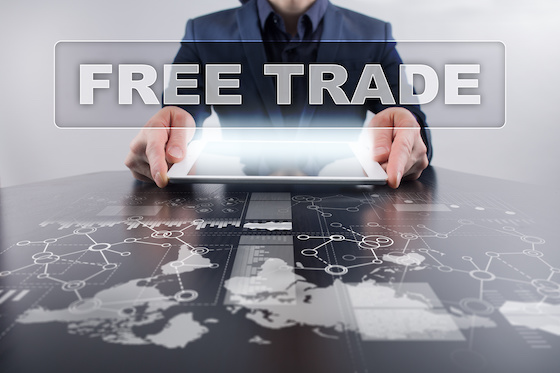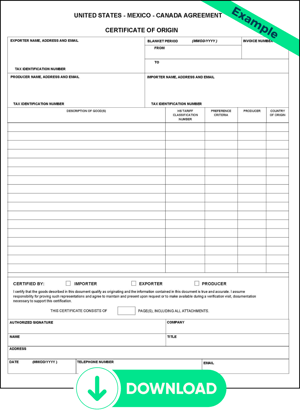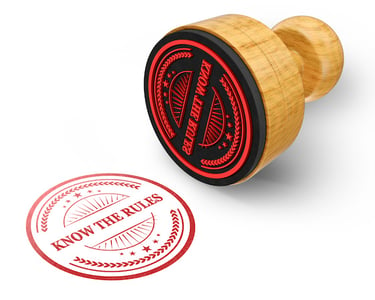 In today’s globalized economy, free trade agreements (FTAs) are an important tool for companies looking to expand their reach and stay competitive in the international marketplace. With reduced tariffs, streamlined customs procedures and increased market access, FTAs create new opportunities for businesses to grow and thrive.
In today’s globalized economy, free trade agreements (FTAs) are an important tool for companies looking to expand their reach and stay competitive in the international marketplace. With reduced tariffs, streamlined customs procedures and increased market access, FTAs create new opportunities for businesses to grow and thrive.
If you still need convincing, consider this: According to U.S. Chamber of Commerce research, U.S. exports to new FTA partner countries have grown roughly three times as rapidly on average in the five years following the agreement’s entry into force as the global rate of growth for U.S. exports.
However, many companies fail to consider the benefits of free trade agreements until after they have produced a product or identified a supplier for import or export. This can lead to missed opportunities and increased costs for those who do not use all of the FTAs available to them. (The majority of companies don’t.)
What Is a Free Trade Agreement (FTA)?
A free trade agreement (FTA) is a legally binding agreement between two or more countries or regions that establishes the terms and conditions for trade and commerce between them. The primary objective of an FTA is to reduce or eliminate barriers to trade between the participating countries. An FTA typically eliminates or reduces tariffs on goods and services traded and may also address non-tariff barriers such as import quotas, licensing requirements, technical standards and regulations that could hinder trade.
How Do Free Trade Agreements Work?
Free trade agreements can be bilateral, involving two countries, or multilateral, involving multiple countries or even entire regions. They create a more open and predictable environment for businesses, leading to increased trade volumes. When participating in trade under an FTA, exporters need to fulfill certain documentation obligations to ensure compliance with the agreement’s rules and demonstrate eligibility for preferential treatment.
What Free Trade Agreements Are Currently Active?
The U.S. currently has 14 FTAs in place with the the following 20 countries:
The Benefits of Free Trade Agreements
We talked with Jodi Ader, at RSM’s Trade Advisory Services, where she helps companies find ways to leverage FTAs and implement compliance programs around them. Ader explained the factors companies should weigh when deciding if they could benefit from an FTA, whether they’re just developing a product or considering changes to an existing supply chain.
First, company stakeholders need to understand why it’s worth a little extra time and investment to take advantage of an FTA. These are some of the top benefits:
- Tariff elimination
- Increased market access
- Improved regulatory coherence
- Intellectual property protection
Tariff Elimination
FTAs can eliminate or reduce tariffs on goods traded between participating countries. This can lower the cost of importing goods into the U.S. and make U.S. exports more competitive in foreign markets.
Increased Market Access
FTAs can provide U.S. exporters with greater access to foreign markets by eliminating trade barriers and reducing regulatory burdens. This can help U.S. businesses expand their customer base and increase sales.
Improved Regulatory Coherence
FTAs can help ensure that trade regulations and standards are aligned between participating countries. This can reduce compliance costs and increase efficiency for U.S. businesses.
Intellectual Property Protection
FTAs typically include provisions to protect U.S. intellectual property rights in participating countries. This can help U.S. businesses protect their innovations in foreign markets.
Free Trade Strategies for Companies Developing a New Product
Oftentimes FTAs are an afterthought for companies when developing a product and setting up its supply chain. But weighing the cost benefits at this point in the process will be easier than adjusting an existing supply chain. “Free trade agreements can be a boon to businesses that want to expand their market reach, reduce costs and remain competitive,” explained Ader. “However, to reap these benefits, companies need to plan and evaluate.”
Consider these areas:
1. Sourcing
Companies should evaluate the potential benefits of sourcing raw materials, components or finished products from FTA member countries. By doing so, they may be able to take advantage of preferential tariff treatment, which can result in significant cost savings. And Ader said not to only think about U.S. FTAs during this process. Also, consider agreements in place in the countries where manufacturing or distribution are based.
2. Manufacturing
Companies should consider the origin of the materials sourced and whether the manufacturing process satisfies the specific rule of origin of the FTA they hope to utilize for the finished product. This may require changes to the manufacturing process or adjustments to the supply chain to ensure that the finished product qualifies for preferential tariff treatment.
 3. Customs and Documentation
3. Customs and Documentation
Companies should consider the administrative requirements for claiming FTA benefits, such as obtaining the necessary documentation and complying with other compliance requirements. Companies that invest in documentation, record-keeping and training are better positioned to take advantage of FTAs and avoid penalties.
4. Landed Cost
Landed cost refers to the total cost of a product once it has been shipped and arrived at its destination, including the cost of the product itself, transportation fees, customs duties, taxes and any other charges incurred during the shipping process. It is a critical factor to consider when evaluating the costs and benefits of FTAs.
You should calculate the landed cost of the product under the FTA versus the non-FTA scenario, taking into account what you learned about sourcing and manufacturing. This final calculation can help companies understand the true cost savings of an FTA.
Use the Shipping Solutions Landed Cost Calculator to accurately estimate this cost.
Free Trade Strategies for Companies With an Existing Product
“The same scenario works for developing a new product as for moving distribution or shifting manufacturing for an existing product,” explained Ader. Companies already selling globally should start with the most significant parts or products in their supply chain. Consider the four factors above, comparing what you currently pay vs. what you would pay under an FTA if you shifted sourcing and production. Within those categories, consider these costs:
- Raw materials
- Shipping and transportation
- Duties and other taxes
- Labor
- Production
- Electricity and utilities
How Do You Determine Which Free Trade Agreements Apply to Your Products?
The U.S. currently has 14 FTAs in force with 20 countries. Here are some resources for learning more about the different FTAs and whether your product will qualify:
- Department of Commerce’s International Trade Administration: The ITA’s Free Trade Agreements Help Center includes overviews of the 20 U.S. FTA partner countries, a way to check if products are eligible for tariff reduction, an FTA Tariff Tool for looking up duty rates, information on rules of origin and documentation, and more.
- U.S. Customs and Border Protection (CBP): On their free trade agreements page, you’ll find a link to each agreement with information on tariffs, quotas, FAQs and side-by-side comparisons of different FTAs.
- World Trade Organization: Their Regional Trade Agreements Database includes links to the text of various agreements along with detailed, practical guidance on how to take advantage of agreements worldwide.
- Trade consultants: “Some people might find doing this research themselves burdensome. That’s where we come in,” said Ader. RSM’s trade advisory services and other consultants can provide this type of guidance for companies that need help.
How to Stay Compliant With Free Trade Agreements: Tips and Best Practices
“Companies absolutely need to have a deep understanding of the rules and regulations. If they don’t, they put themselves at risk for fines and penalties,” said Ader. And though FTAs can be complex to deal with, she emphasized that companies just need solid procedures in place.
 Here are some key considerations for companies looking to comply with FTAs:
Here are some key considerations for companies looking to comply with FTAs:
- Understand the rules of origin
- Know the documentation requirements
- Train employees
- Conduct regular audits
- Seek guidance
- Use a Customs Compliance Program
Understand the Rules of Origin
The rules of origin determine whether a product qualifies for preferential tariff treatment under the FTA. Companies must understand these rules and ensure that their products meet the criteria to avoid potential fines and penalties. Someone with training or experience should have ownership in this area, and key stakeholders such as purchasing associates should be involved.
Know the Documentation Requirements
In addition to the rules of origin, other documentation requirements must be met to comply with FTAs. These may include things like certificates of origin, shipping documents and other paperwork. Companies must ensure that they have the proper documentation in place and that it is accurate and up to date. The document determination feature in the Shipping Solutions Export Compliance Module can help. Sign up here for a free demo.
Train Employees
Train people in your company on internal policies and procedures, as well as regulations related to FTAs. Ader has seen big fines levied against companies that didn’t follow this tip! Assign centralized ownership to someone with the right background and experience to handle FTA work, and make sure that the person signing documentation is qualified and has high accountability in the company. Typically employees in purchasing, trade compliance and supply chain logistics are most responsible for FTA implementation, but people working in other areas need to be aware of regulations.
Conduct Regular Audits
Regular audits can help companies identify potential compliance issues and ensure that their procedures are up to date. FTAs are subject to change, including changes to the rules of origin or other requirements, and companies must be able to adapt to these changes to maintain compliance. Audits can be conducted internally or by a consultant, and should include a review of documentation, procedures and training programs.
Seek Guidance
Consider relying on a third-party consultant or outsourcing the work if you don’t have full-time staff dedicated to administering your FTA program. Consultants like Ader, with expertise in FTA compliance, can ensure that companies are meeting all the requirements.
Customs Compliance Program
Include compliance with FTAs as part of your Customs Compliance Program. Develop different procedures for each FTA you are participating in, because the requirements and documentation are different for each agreement.
“Setting up an FTA program will definitely take time,” said Ader. “But once it’s done, the benefits and cost savings do far outweigh the costs.” And once it’s set up, aside from checking for annual updates, it will not be as burdensome from a time or money perspective to maintain.
Who benefits most from Free Trade Agreements?
Ader has worked with companies in a number of sectors that have successfully lowered costs through FTAs, resulting in increased market share. FTAs can benefit a wide range of industries, but some tend to benefit more than others.
Small and Medium-Sized Exporters
Small and medium-sized exporters can benefit greatly from FTAs, said Ader, and she used the United States-Mexico-Canada Agreement (USMCA) as an example. Some of the benefits under USMCA that especially help this group of exporters:
- USMCA reduces obstacles to doing business. Exporters no longer need a local presence in Canada to export products, for example.
- A higher de minimis helps lower costs, making it easier for smaller companies to compete in the market.
- Stricter IP protections especially help small companies that are especially vulnerable to having their IP stolen.
Learn more about taking advantage of the USMCA in our articles Exporting to Canada: What You Need to Know and Exporting to Mexico: What You Need to Know.
Industries with High Trade Elasticity
Trade elasticity measures how responsive the demand for a product is to changes in its price. A higher trade elasticity indicates a greater increase in demand for a product in response to a decrease in its cost. So industries with higher trade elasticities may really benefit if they’re able to lower costs through an FTA. Machinery, textiles, electronics, computers, metal and petroleum products are among the industries with the highest trade elasticities.
Thank you to Jodi Ader at RSM for her expertise in this article. Ader is a manager in RSM US LLP’s trade advisory services practice. She assists corporations in planning and creating world-class compliance operations and food safety programs. She has substantial experience in import, export control and sanction matters, including CBP, FDA, USDA and EPA regulations. Her main areas of focus include tariff reduction planning, trade risk assessments, training programs, and policy and procedures development.



